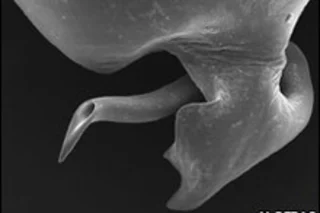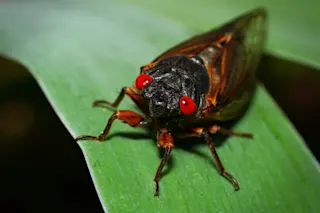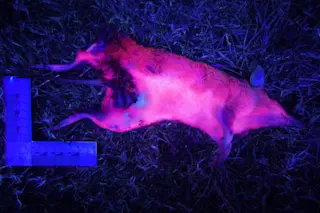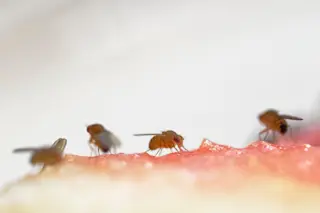Males of the spider species Harpactea sadistica have a violent way of increasing their odds of reproductive success. In the midst of a mating tussle, the male stabs his spiked copulatory organ (pictured) into the abdomen of the female, in order to deposit his sperm directly into the female’s ovaries.
This process, known as traumatic insemination, is common among many hermaphrodite species as well as some insects with separate sexes, most famously the bed bug. But it has never before been observed in other arthropods. “Now we have a very odd biological phenomenon in an unrelated taxonomic group…. It’s like finding a peacock’s tail in a non-bird species” [The Scientist], says Mike Siva-Jothy, who has observed the behavior in bed bugs.
In the study, published in the Proceedings of the Royal Society B, the researchers explain that female spiders have a structure called a spermatheca that stores sperm until an ...














